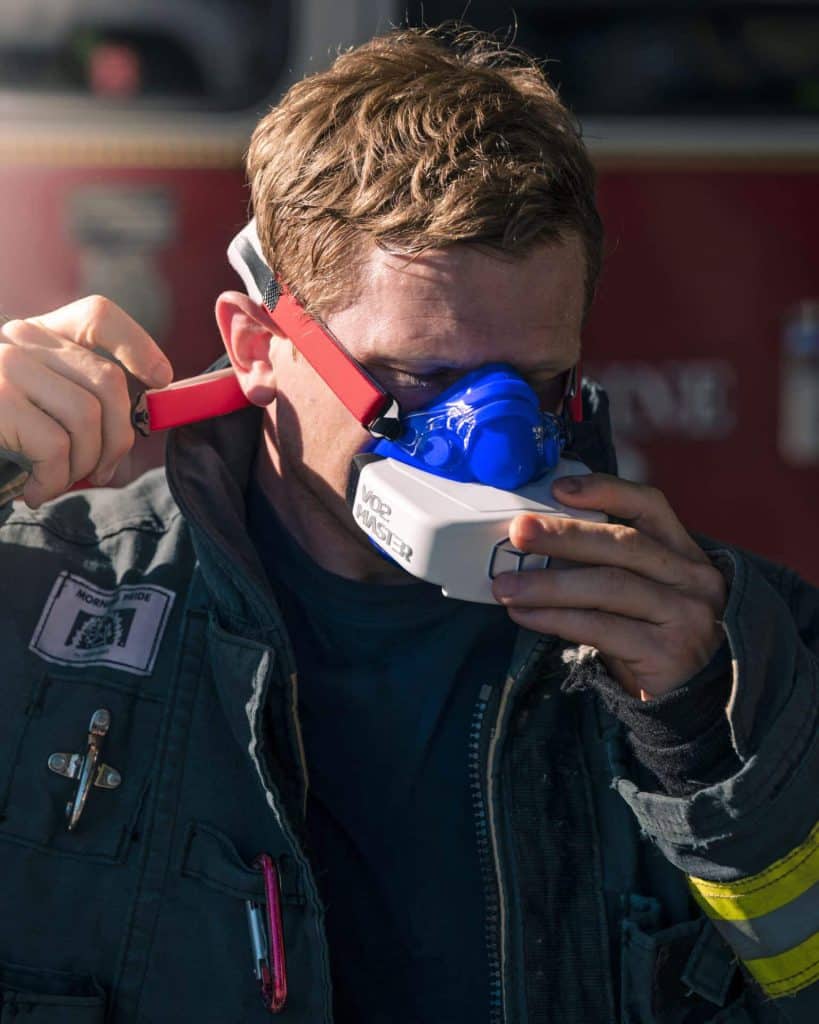Bringing VO2 Testing to the Firehouse, Insights from Daniel Higuera, PhD
Daniel Higuera, PhD, shares how VO2 max testing supports firefighter health, readiness, and mental resilience, and how departments can bring testing out of the lab and into the field using VO2 Master.
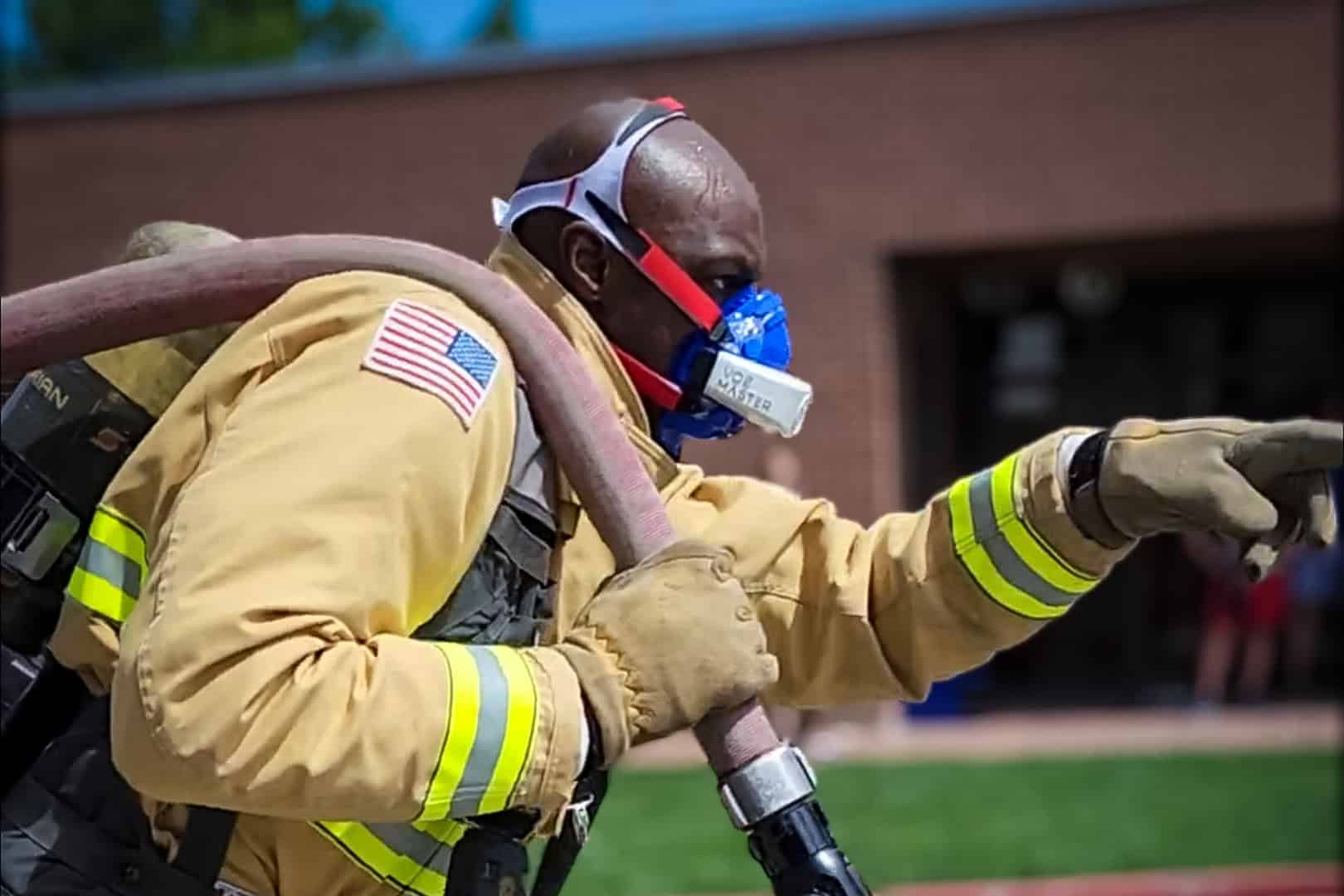
Written by Daniel Higuera, PhD. Instagram @dr.danielhiguera
As a researcher and professor of kinesiology who works with approximately 2,000 firefighters each year, I have observed that the modern-day firefighter knows the importance of a high VO2max for operational readiness.
However, what is not well known is how VO2max is strongly related to many other aspects of firefighter health.
Emerging research, including findings from my doctoral work, has identified associations between higher VO2max and lower symptomology of anxiety, depression, and PTSD. Additionally, firefighters with higher aerobic capacity also tend to recover more efficiently following a 24-hour shift.
Despite these benefits, VO2 testing remains underutilized in many departments due to logistical and financial challenges. The VO2 Master device offers a practical alternative to traditional metabolic carts by enabling accurate, field-based assessments without reliance on laboratory infrastructure.
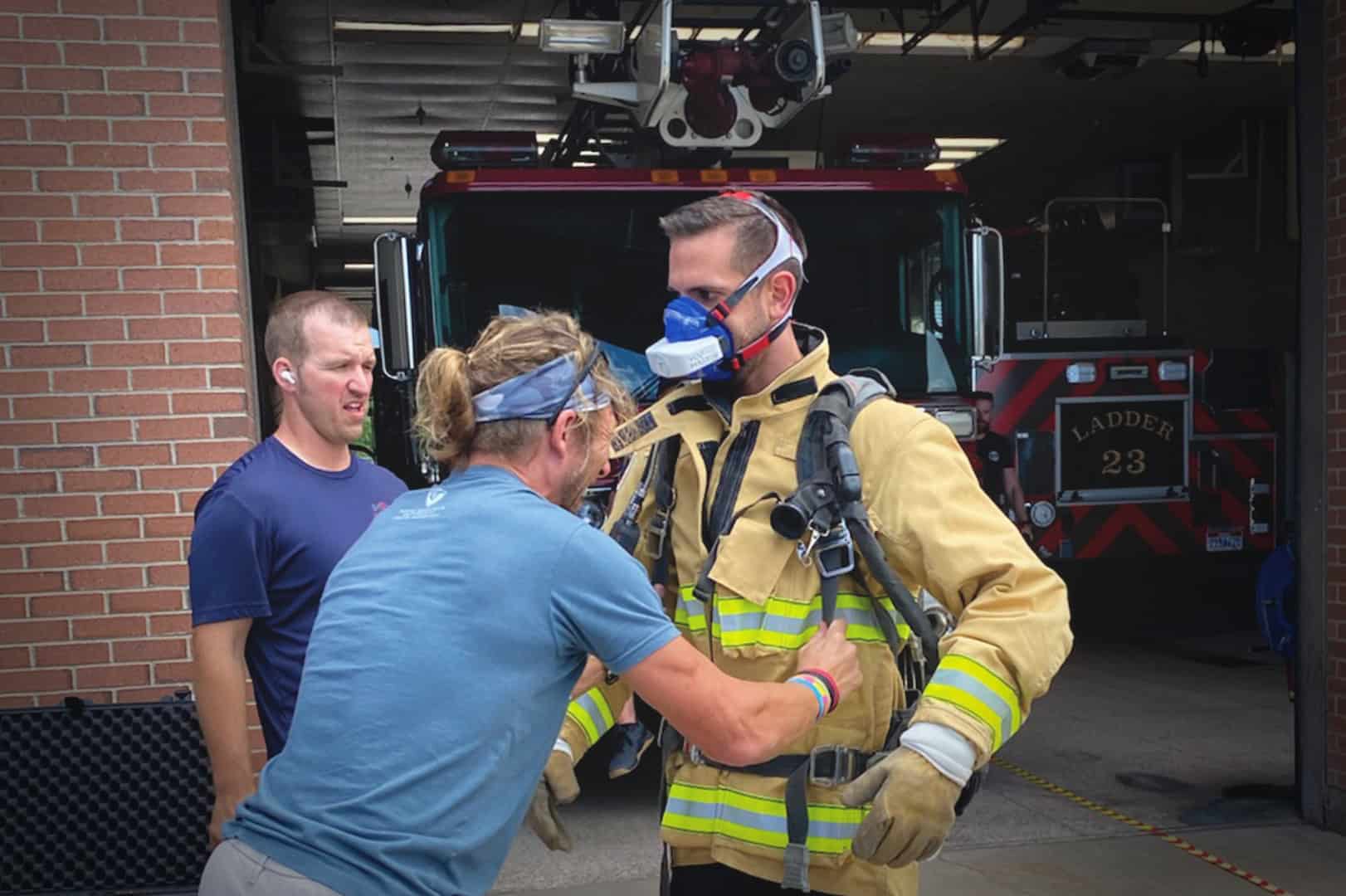
Step 1: Understand Why VO2max Testing Matters
The profession of firefighting places a sustained physiological and psychological burden on the individual. As firefighters advance through their careers, the cumulative strain becomes evident.
Cardiopulmonary efficiency declines, sleep quality deteriorates, and mental health resilience weakens.
Given its correlation with multiple health indicators, VO2max serves as a reliable metric for assessing overall firefighter wellness. A decline below the NFPA-recommended minimum of 42 mL/kg/min may signal reduced operational readiness, elevated cardiovascular risk, and potential vulnerability to mental health deterioration.
At the organizational level, departments can track aggregate VO2 trends without identifying individuals by name. This enables leadership to assess the health trajectory of their members and guide cultural shifts toward wellness-centered policy. A proactive approach may mean stronger morale and a lower economic burden due to a healthier department.
Step 2: Choose the Right Testing Format
Departments have multiple testing formats to consider when assessing aerobic capacity.
Traditional field-based protocols specific to VO2max, such as the Cooper 12-minute run, the beep test, and the Bruce treadmill protocol, are widely acceptable.
However, some departments may prefer job-specific assessments, including the Biddle Physical Ability Test or the Firefighter Combat Fitness Challenge, which align testing more closely with occupational demands.
Regardless of the protocol selected, integrating VO2 Master testing allows departments to collect individualized, real-time data without the need for laboratory infrastructure or a full-time human performance specialist. Its portability supports deployment across various settings, including fire stations, training academies, and return-to-duty evaluations.
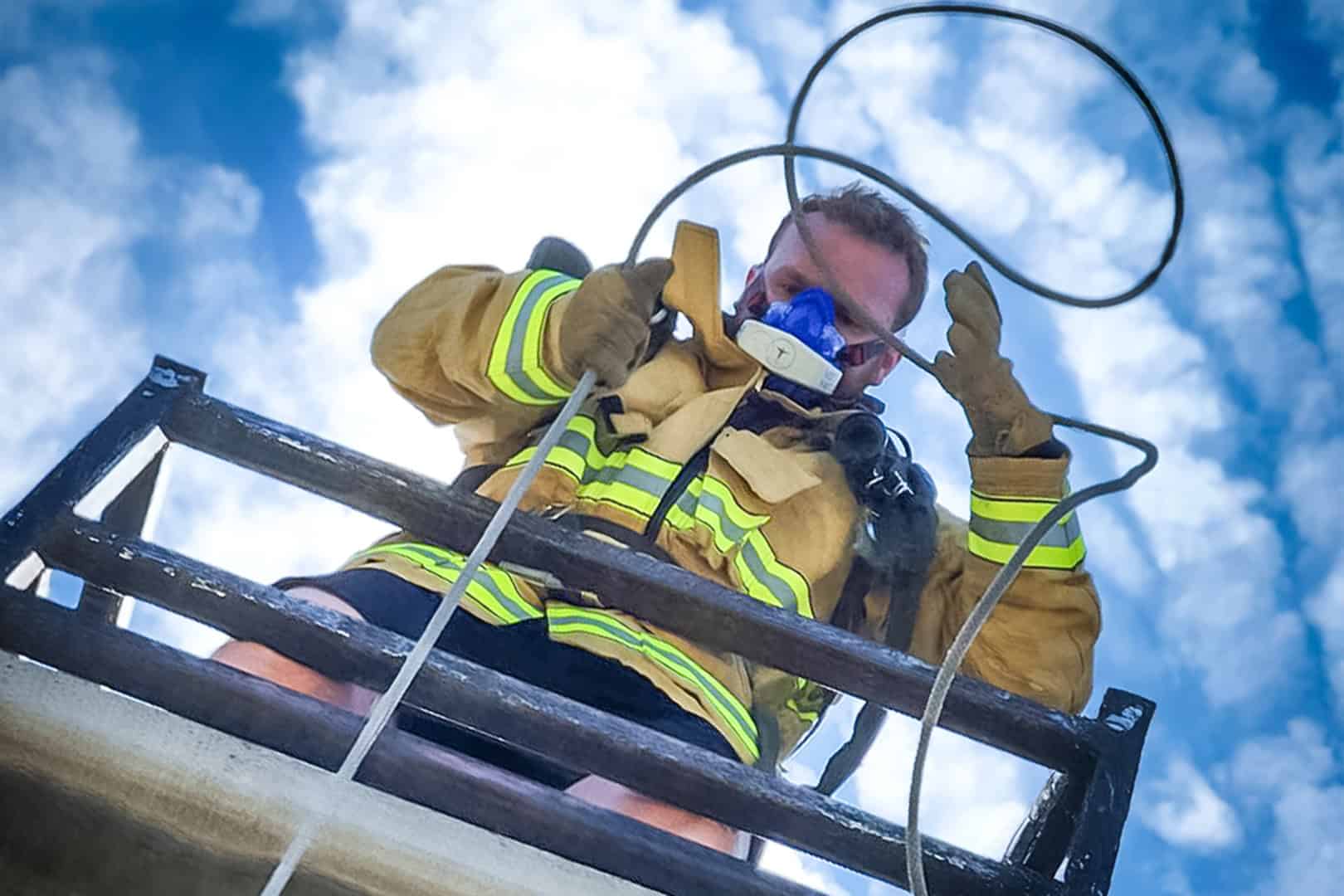
Step 3: Set Up the Equipment
Set-up of the VO2 Master analyzer can be completed in less than 10 minutes:
- Begin by calibrating the device according to the app instructions
- Once prepared, the mask must be secured properly to maintain an effective seal
- The heart rate monitor should be fitted to the firefighter and confirmed for connectivity
- Finally, sync the system with the VO2 Master app to observe real-time data, including airflow, heart rate, and oxygen consumption.
Step 4: Organize Testing Days and Personnel
Proper scheduling minimizes disruption and supports consistent data quality. Departments may choose to take testing personnel and participants out of service or, to limit operational burden, conduct testing after shift change or alongside routine physical evaluations. For example, we integrate testing with annual wellness assessments.
Testing requires minimal staffing. One member can assist with equipment setup, ensuring proper fit and seal. Another can manage data collection, either by standing beside the participant during treadmill testing or accompanying them during physical ability testing.
One member can do both activities if just one analyzer is being used. Provided that enough VO2 Master units are available, testing in pairs or small groups preserves workflow efficiency while maintaining safety and oversight.
Step 5: Review the Data and Apply It
Exercise science often appears complex. However, VO2 Master simplifies the process for the everyday firefighter by delivering clear, actionable data.
In addition to VO2max, firefighters receive insights on heart rate training zones and ventilatory thresholds that closely parallel anaerobic thresholds. These outputs allow for the design of personalized fitness programming aligned with the specific demands of the job.
With this information, firefighters are provided the precise heart rate ranges required for training in Zone 2 to enhance aerobic efficiency or for exceeding anaerobic thresholds to build high-intensity work capacity.
These insights support both individual performance optimization and broader crew-level readiness.
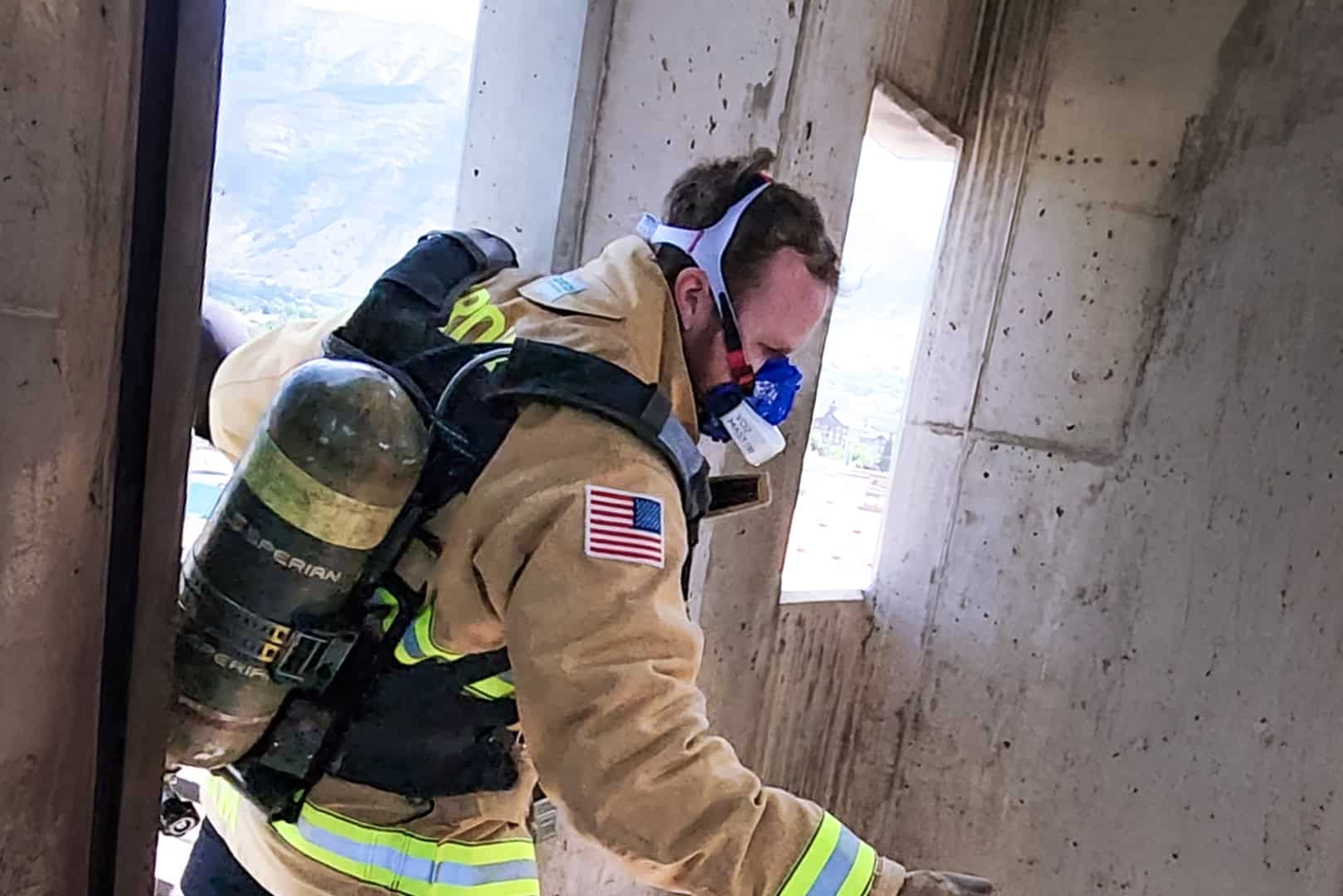
Lessons Learned
Firefighters are drawn to individualized data, especially when outcomes are objective and measurable.
The objectivity of VO2max testing removes ambiguity.
A firefighter either meets the NFPA-recommended standard or does not. When presented with this benchmark as a challenge, most firefighters demonstrate a strong drive to meet or exceed expectations.
Based on my experience working with firefighters over the past decade, those who demonstrate high aerobic fitness also display superior health outcomes. Their profiles often include fewer injuries, stronger mental health, and more favorable cardiovascular and metabolic markers.
From a departmental perspective, the implications are just as significant. Scientific evidence consistently links higher fitness levels with reduced economic burden. Departments that adopt routine VO2max testing are not only investing in individual firefighter wellness but also in the financial sustainability and operational readiness of their department.
VO2max testing is now accessible, portable, and quantifiable. There is no faking your fitness, and VO2max provides a validated standard.
Firefighting demands a specialized fitness profile, and performance alone cannot obscure deficiencies in cardiorespiratory health. Routine VO2max testing promotes accountability and transparency.
Leaders can model the importance of health by participating in assessments and using results to shape departmental wellness strategies. Department-wide trends can be monitored without naming individuals, helping guide policy changes and reinforce a culture focused on sustainable performance and health.
Ready to learn more about how you can incorporate VO2 Master into your firefighter training regimen? Contact our team of in-house experts today.
Images contributed by Dr. Daniel Higuera
